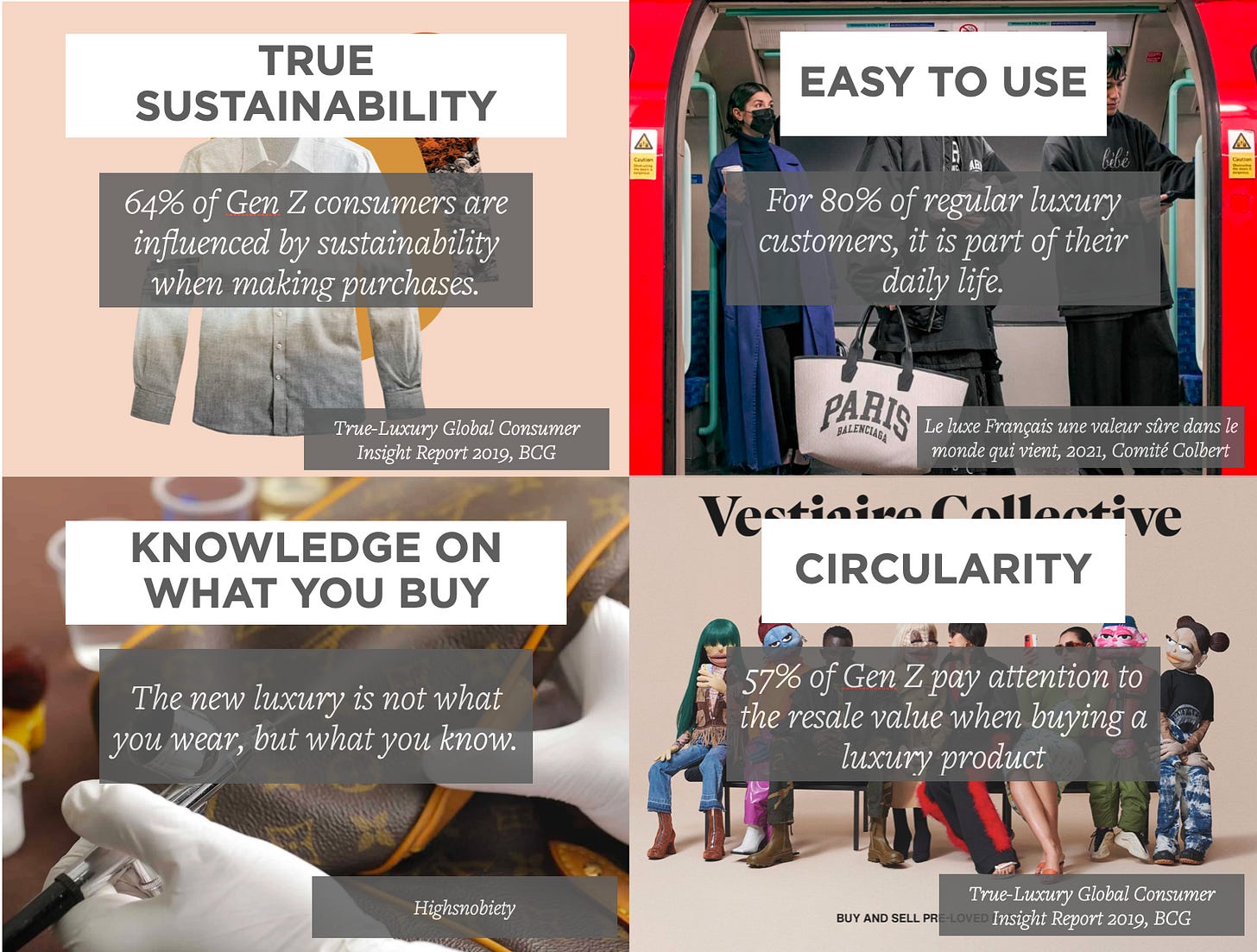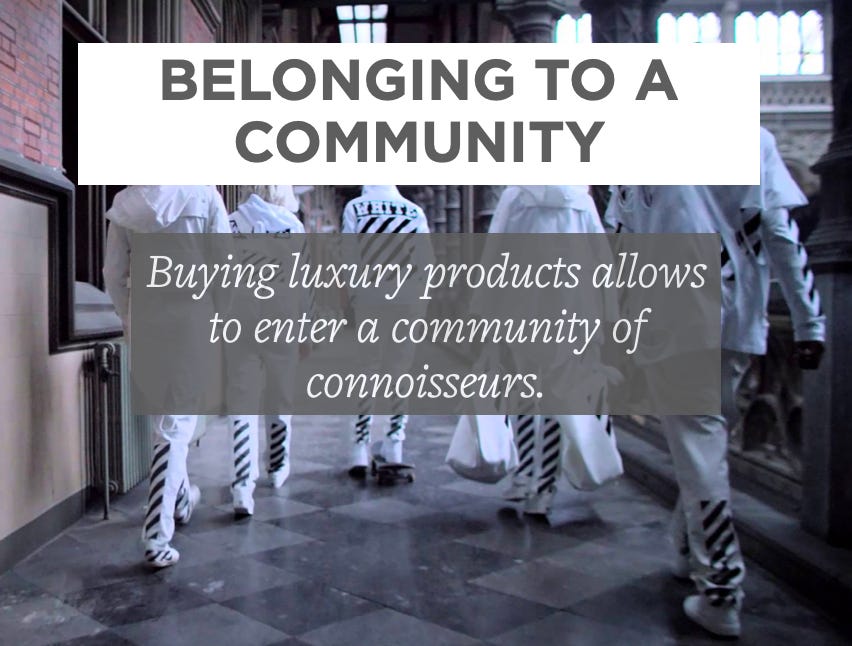Apocalypse Files - #10 - Digital x Luxury
In each issue (bi-monthly), we'll explore the threats to the current business model of a company or of an entire industry, the forces that could take them down or drive systemic changes, and most importantly we'll imagine possible solutions, looking at new and evolving trends, untapped niches, new business models or venture opportunities...
In this issue, we will take a look at how luxury brands can use digital goods to build an innovative value proposition for Gen Z while maintaining relevance to their heritage, keeping in mind the metaverse, NFTs and blockchain trends. Welcome to the Apocalypse Files.
Vocabulary note: we talk of the Gen Z for the generation, and of Gen Zers to talk about its members.
Gangsta’s Paradise
In the beginning of 2022, Hermès took legal action against the artist Mason Rothschild, who commercialized the Metabirkin, a NFT copying the emblematic handbag of the French house. The 100 Metabirkins were sold for a total of $450K. To this day, Hermès doesn’t market any NFT, while the artist defends himself by considering the NFT as artworks depicting the bags.
Other brands did not wait to seize the opportunity considering NFT dazzling success. In some occasions, they even managed to sell their products as NFTs at a higher price than in the real world, one early example being the Dionysus handbag from Gucci. Today, the phenomenon of NFTs stirs up the world of luxury, brands are looking to leverage it to seduce the Gen Z but the trend also stirs public debate by being presented as a basic temporary fad or a media buzz without long-lasting business potential.
For luxury brands, attracting the Gen Z is a vital issue, as they should account for 40% of luxury purchases by 2035, up from 4% in 2019 (BusinessOfFashion). Integrating digital as core of their value proposition becomes central to speak to hyperconnected consumers who have grown looking at the world through smartphones, especially since topics such as the metaverse, gaming or NFT are not addressed exclusively to the Gen Z but to a much wider target:
The $180 billion gaming market reached around 2.5 billion gamers in 2021, with the average gamer’s age being 34. (TechJury).
The NFT market has reached $25 billion in 2021 with an exponential growth from Q2 to Q3 (Reuters).
Despite a strong cultural gap at first sight between the 2 universes, the luxury sector should see in these two trends unmissable business opportunities.
Here comes the hotstepper
Let’s dive into this audience: Gen Zers and how to attract them.
Coming after Millennials, the Gen Zers are people born between 1995 and 2010, also known as digital natives. The Gen Z takes a step aside from the consumerist model inherited from their parents, which makes them a complex and totally new target for luxury brands.
Despite their distinct priorities and interests, Gen Zers share 5 major common expectations concerning their purchases. Some of these expectations existed in the past, but the Gen Z takes a U-Turn in how they apply them to their habits and consumption:
Don’t take it personal
Now that we understand Gen Zers a little better, let’s explore how luxury brands can turn them into consumers. Those brands face 3 mains challenges.
First, there is a dual image of luxury brands from young populations. They love wearing luxury items from select brands (Gucci, Balenciaga, LV...) while they hate the values that most luxury brands embody. They are often seen as a remnant of old capitalism that is reluctant to shift towards sustainability, both regarding environmental and social impact. Gen Zers’ parents used to like and buy these brands which have then struggled to adapt to today’s society’s requirements (see accusations on Kering or LVMH about bad treatment of their employees working in developing countries).
In addition, Gen Zers don’t buy the same way their parents do. They want to be able to wear their luxury products on a daily basis due to their high quality. Luxury products are no longer the uncomfortable and extremely fragile clothes to wear on Sundays or special occasions. They are more like Apple smartphones, ultra-ergonomic products to use on daily basis.
Finally luxury firms try to insert themselves into gaming, metaverses and NFTs, a flourishing craze among Gen Z. These new digital sectors present the benefit of sharing many common values with luxury as innovation, traceability and exclusivity. Nevertheless, the market stays timidly addressed by the major luxury firms, struggling to build a solid business model and understanding the Gen Z expectations. Games such as B. bounce or H. Pitchhh, created from scratch by Burberry and Hermes without any plug-in into any existing famous game, illustrate that struggle. Created in 2018 and 2019, they have been both removed from the App store.
This is how we do it
If you are a luxury brand or a company looking to boost your core offering, here are 5 proposals to improve your digital presence and attract Gen Zers.
1) It’s not just about you: embrace collaboration
We mentioned it above: Gen Zers love collabs between brands they like. At first, they acclaimed collabs between streetwear and other fashion brands or entertainment licences. The phenomenon has extended to video games, jewelry, tableware, office staples. From Supreme x BAPE in 2002 to Nike x Roblox in 2022, almost all imaginable collabs have happened... and Gen Zers are the first target with 67% declaring they buy collabs (source BCG). This has the potential to reshape the way luxury houses attract their customers, where previously they relied on their notoriety and on developing their imagination. With its distrust and critical look of the past, the Gen Z is pushing luxury brands to adopt its own culture, and particularly collaborations.
2) Don't just replicate the real world: think about it as a canvas allowing radical creativity.
Luxury brands should also bet on the experiences that digital innovations offer.
With the recent NFT craze - and more globally the metaverse trend, brands discovered a new way of making their customers participate in their brands. With their Re-Nylon collaboration, Adidas and Prada enabled thousands of consumers to participate in a photography contest in which they randomly picked winners (Adidas). The winners received gifts, and their picture was included in a 3000-picture NFT depicting their new products (see below). The NFT were sold and all of the proceeds given to a charity. This operation was conducted for the launch of a collection fully made from recycled nylon, promoting sustainable purchase. The project succeeded in playing on the collaborative spirit, breaking the codes of the very elitist luxury but maintaining the feeling of community beloved by luxury firms and Gen Zers (who made the collection sold out in a few hours).
Digital experiences now also enable to wear clothes or accessories that people love, whether as a filter on social networks (DressX or The Fabricant) or as a wearable in games and virtual worlds (Nike’s newly acquired RTFKT). It is possible for luxury brands to tie permanently a real-life object to its digital counterpart: as a wearable for games and digital worlds, as a proof of authenticity when reselling or using warranty... Making the value of the object even higher, mixing its digital and physical utilities.
3) It's not one or the other: virtual should be part of the brand overall strategy.
An omni-channel strategy is hence needed for luxury brands willing to attract Gen Zers: today’s companies only sell physical wearables. Digital assets might in the future be usable in other games, as filters or profile pics on social networks, and even be an entry point for these digital-native consumers, leading them to like the brand and enter in a physical POS. BCG revealed in 2019 that among the 39% luxury consumers aware of some brands interacting with online games, half of them had already bought luxury in-game items, and almost all of them (86%) purchased their physical version.
4) Together we become more user-friendly: the future belongs to those who mutualize their efforts.
Contrary to their elders - the millennials - Gen Zers are used to access simple services that have advanced functionalities - see the infinite possibilities on Instagram or the adoption of apps that mutualize bank data on one dashboard. Luxury brands should build on this trend and focus on creating comprehensive services with simple interfaces. This could require brands to mutualize their efforts and propose their customers one common solution, as LVMH & Prada Group and Richemont did by building the Aura Blockchain consortium, a digital authentication of physical goods with a high-quality certificate content and efficient UX.
5) Brave new world: leverage the metaverse to shape a greener physical world.
Digital can also be a tool to incentivize customers into better behaviors, such as teaching eco-friendly values through digital tools like H&M recently did by releasing a joint experience with Animal Crossings, in which gamers had to visit the in-game Loop Island where they could buy and catwalk clothes from the new H&M vegan collection. Metaverse initiatives to promote habits on top of the brand’s new clothes become a first step to engage consumers in more responsible behavior, betting on their reproduction in real life, reshaping drastically the brand image (and potentially, to the long run, the brand’s impact).
If we think further how digital could bring more sustainability, luxury brands could help reduce their social and environmental impacts by pushing customers into buying more digital goods than physical ones. Reducing the material used for clothing would reduce the tension on agriculture (for animal and vegetal fabrics), metals and mining (for jewelry) and on societies (for any production that is relocated in lower-wage countries).
The brave new world of 2030
In the long run, we envision (and perhaps fantasize ?) a world where luxury would be to own the minimum physically, even if it means leveraging digital for pleasure purchases.
The brave new world of 2040
In the very long run, we can imagine that the greatest luxury will be to own only the bare necessities in physical form and everything that is a pleasure purchase in virtual form, in order to share with a small network of connoisseurs our commitment to sustainability. But what do we mean by this? In 2050, the must of luxury may be to dress in ultra simple and functional clothes inspired from Uniqlo, keeping only a discreet distinctive sign and adorning the outfit with accessories and original clothes, all exclusively digital.
That's all folks!
PS: If you haven't guessed, all paragraph titles are from singles in the 1995 Billboard Hot 100, the year the first Gen Zers were born.








